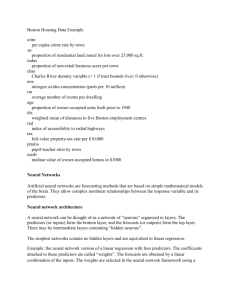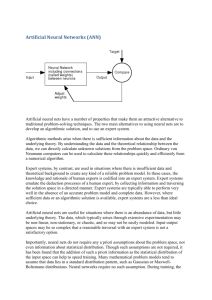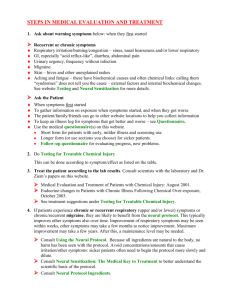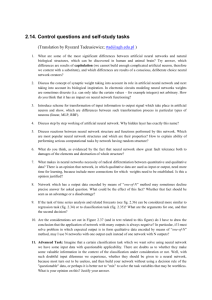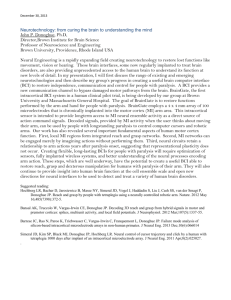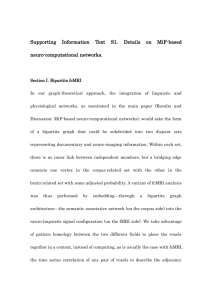Online Appendix: Description of Neural Network Methodology
advertisement
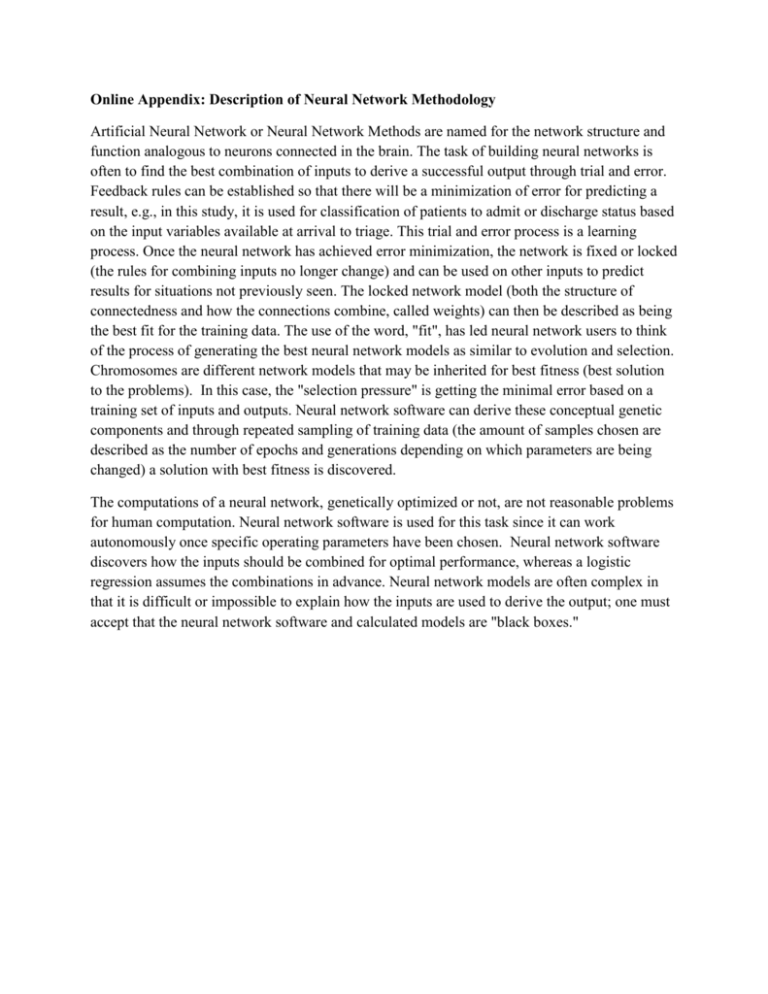
Online Appendix: Description of Neural Network Methodology Artificial Neural Network or Neural Network Methods are named for the network structure and function analogous to neurons connected in the brain. The task of building neural networks is often to find the best combination of inputs to derive a successful output through trial and error. Feedback rules can be established so that there will be a minimization of error for predicting a result, e.g., in this study, it is used for classification of patients to admit or discharge status based on the input variables available at arrival to triage. This trial and error process is a learning process. Once the neural network has achieved error minimization, the network is fixed or locked (the rules for combining inputs no longer change) and can be used on other inputs to predict results for situations not previously seen. The locked network model (both the structure of connectedness and how the connections combine, called weights) can then be described as being the best fit for the training data. The use of the word, "fit", has led neural network users to think of the process of generating the best neural network models as similar to evolution and selection. Chromosomes are different network models that may be inherited for best fitness (best solution to the problems). In this case, the "selection pressure" is getting the minimal error based on a training set of inputs and outputs. Neural network software can derive these conceptual genetic components and through repeated sampling of training data (the amount of samples chosen are described as the number of epochs and generations depending on which parameters are being changed) a solution with best fitness is discovered. The computations of a neural network, genetically optimized or not, are not reasonable problems for human computation. Neural network software is used for this task since it can work autonomously once specific operating parameters have been chosen. Neural network software discovers how the inputs should be combined for optimal performance, whereas a logistic regression assumes the combinations in advance. Neural network models are often complex in that it is difficult or impossible to explain how the inputs are used to derive the output; one must accept that the neural network software and calculated models are "black boxes."


